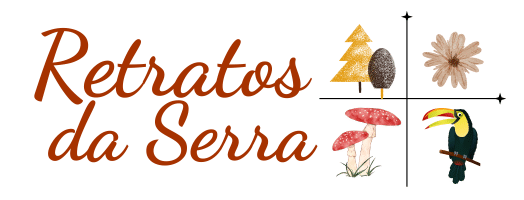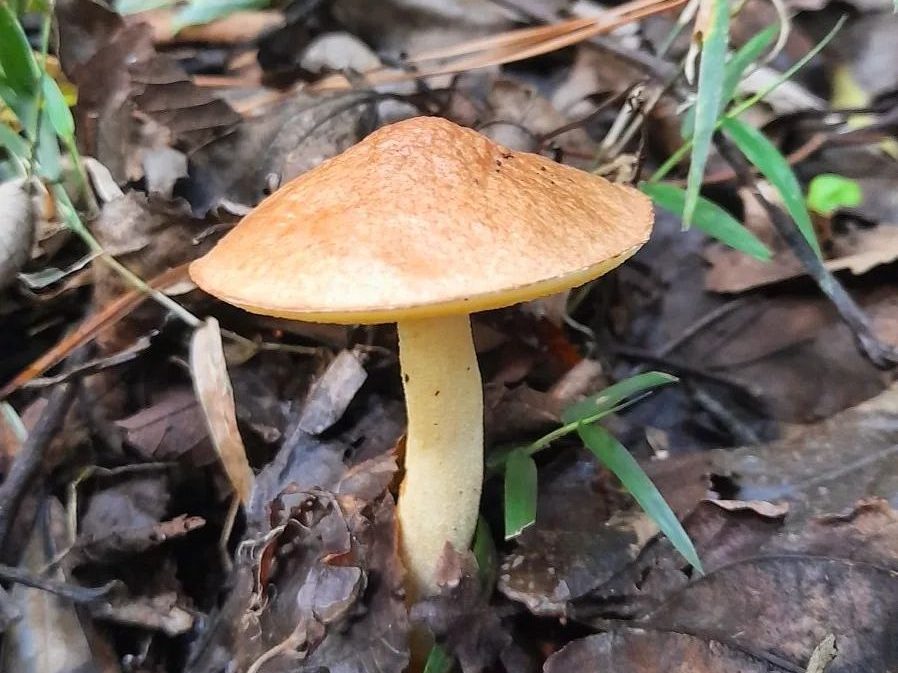Suillus granulatus, the first wild edible mushroom we found here in São Chico, in the middle of summer (02/27/23)! They are found in autumn and winter, so it was a big surprise to find them in February. However, about a week before there was a cold front in which it was about 7ºC at night for 2 days, I think they thought that fall had arrived and decided to start “sprouting”, lol.
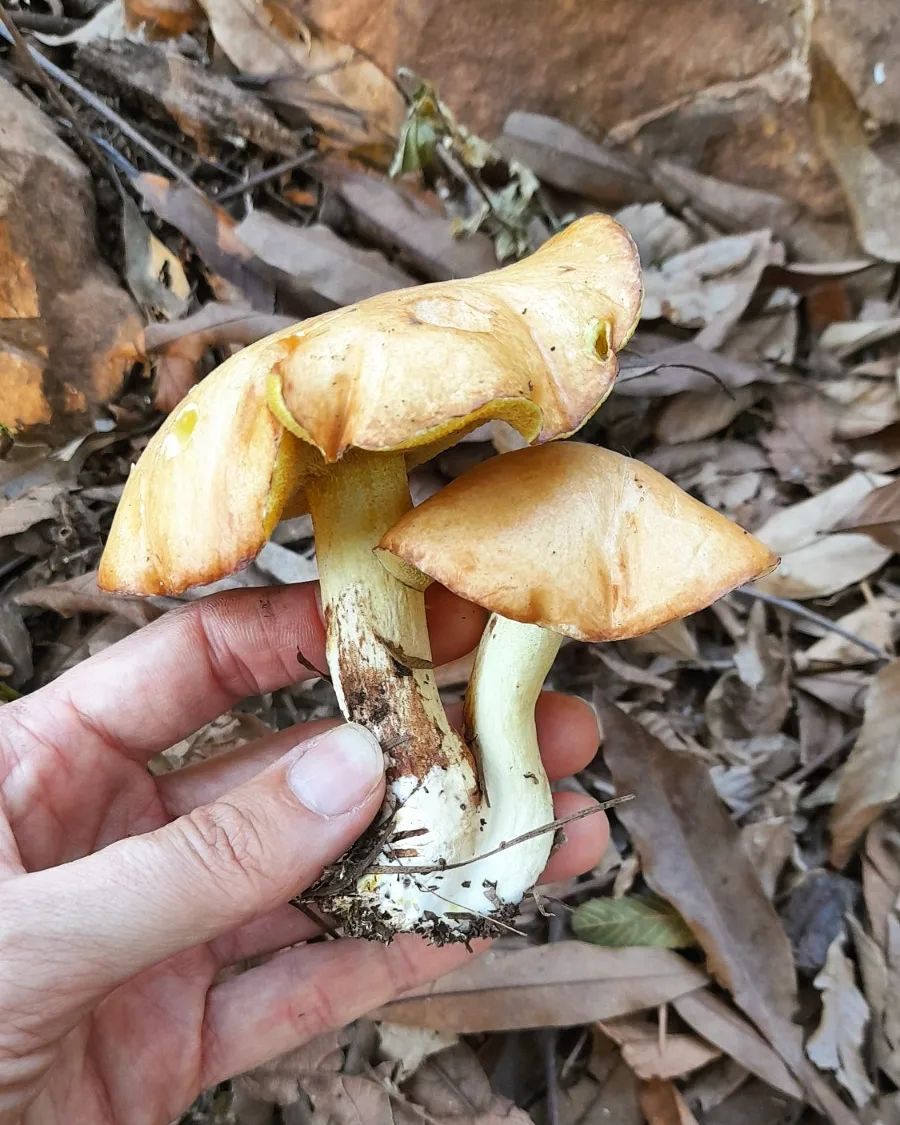
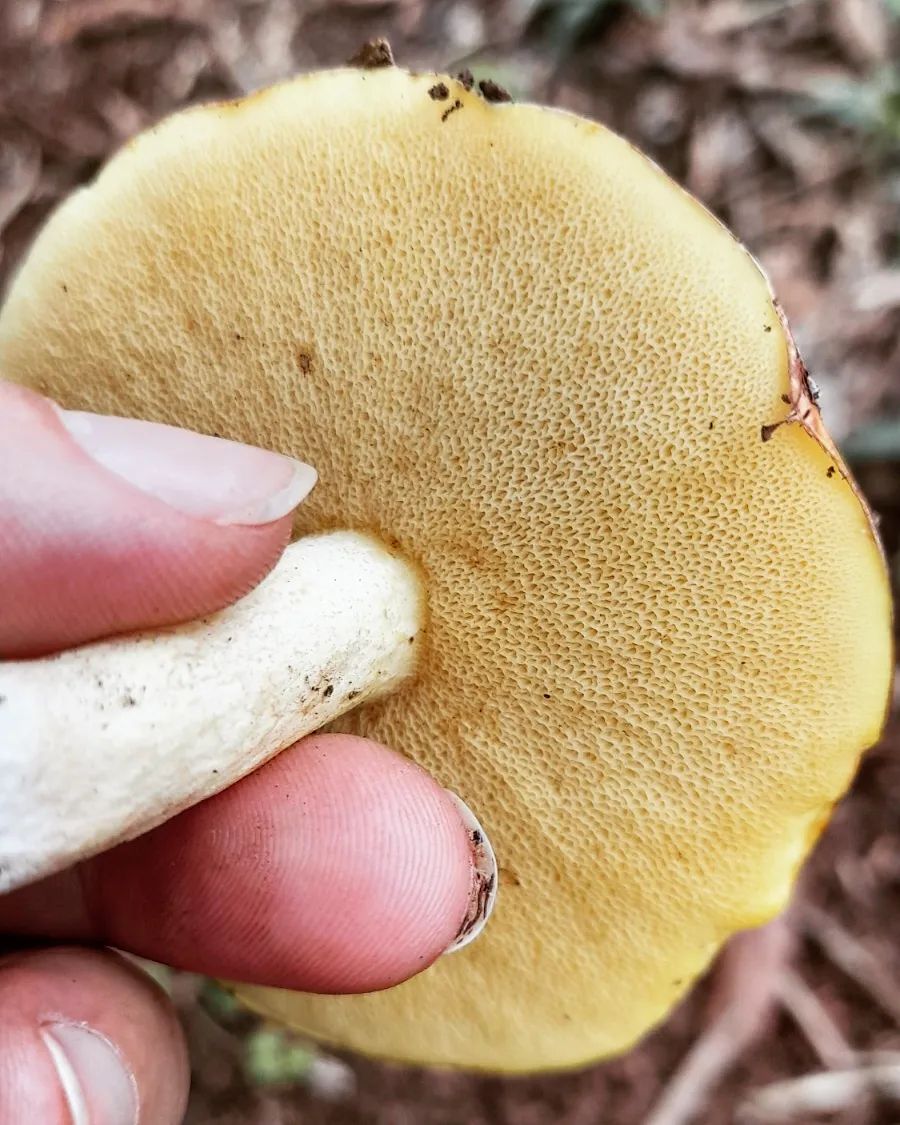
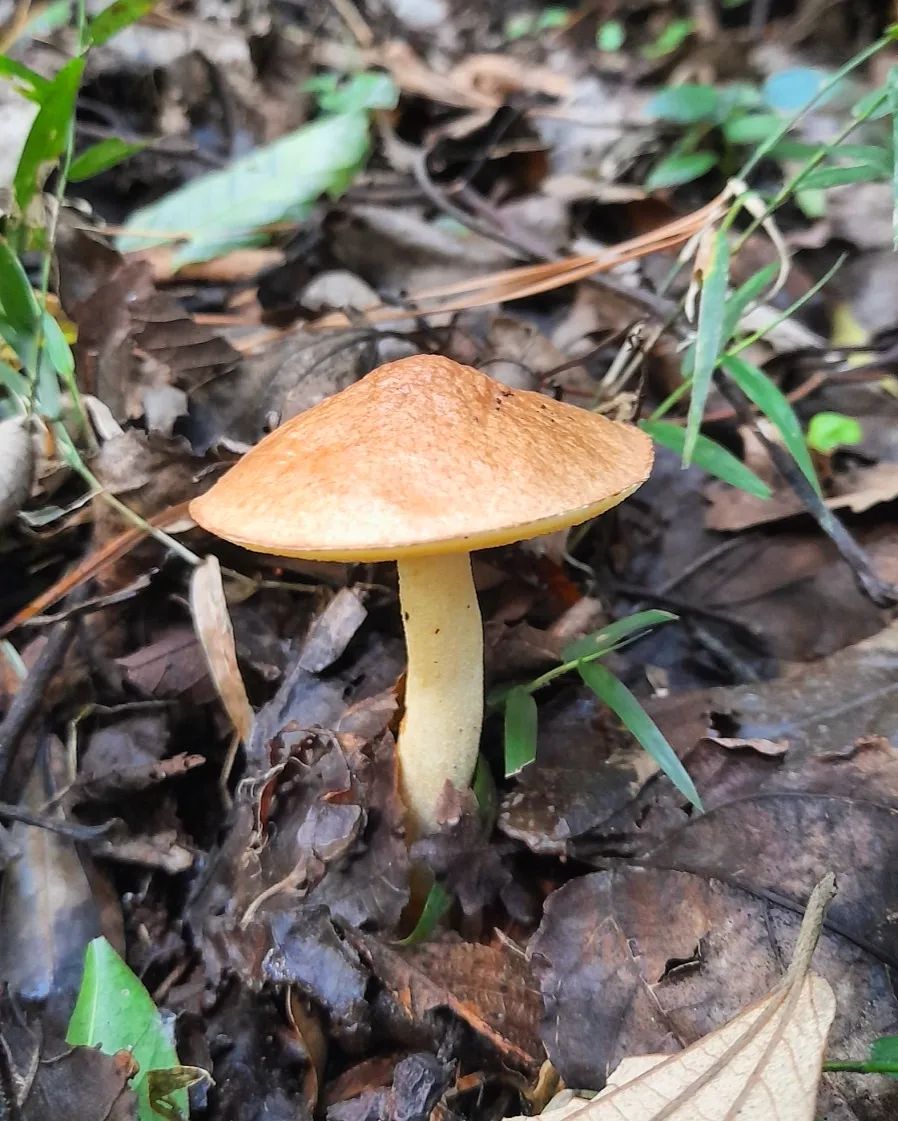
We found and collected a huge amount, I think it was about 3kg – not counting the many we left behind because they were too old or too young, and so they could disperse their spores.
In the 2024 season we found very few in Autumn, and only on our land and not in other areas that we visit frequently and usually find other edible mushrooms such as Suillus salmonicolor, Lactarius quieticolor and Boletus edulis (Porcini). I think it we were quite lucky to find that enormous amount and still in the summer, lol.
Suillus granulatus mushroom characteristics
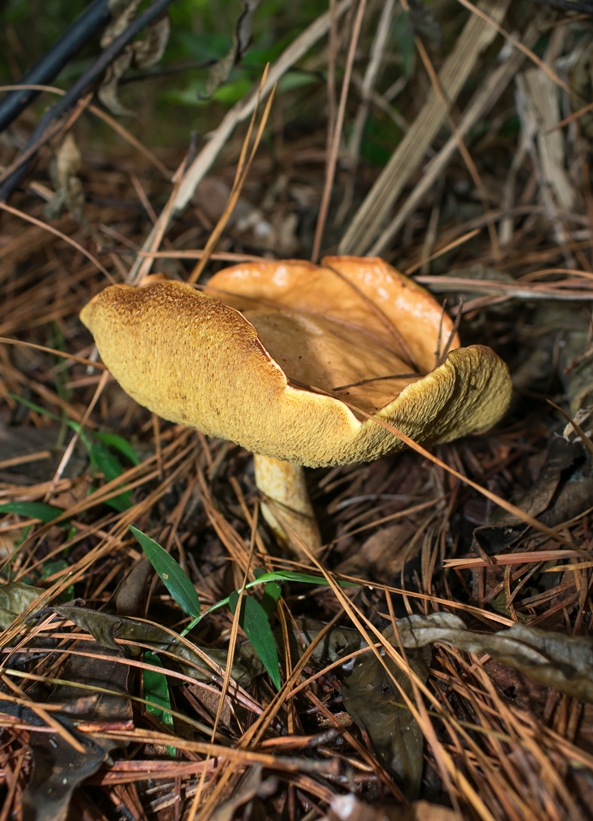
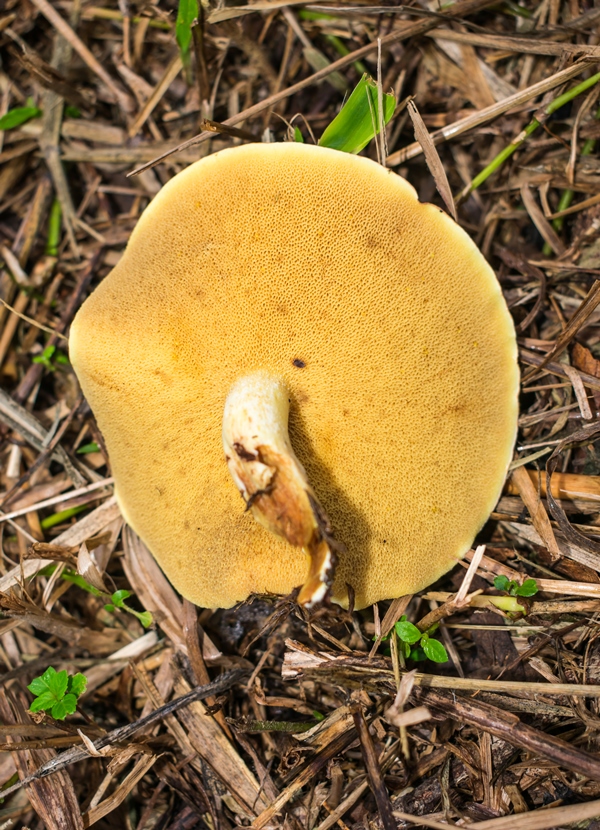
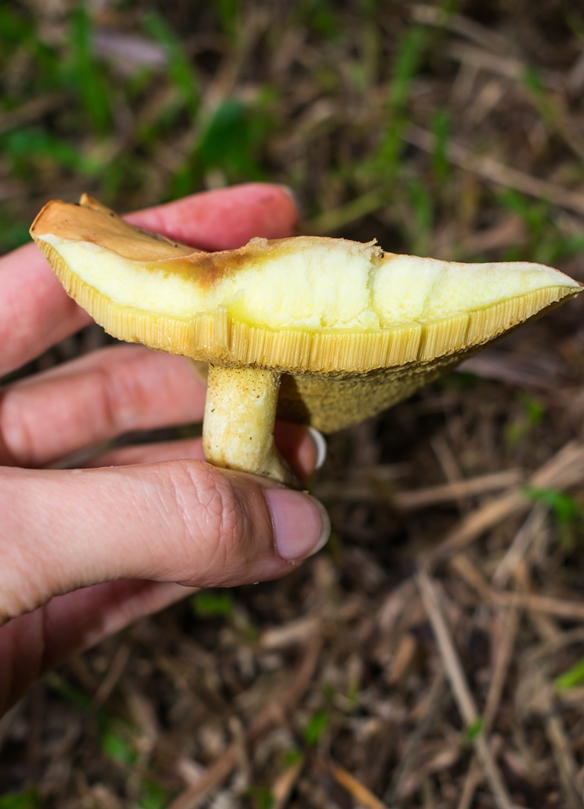
Also known as Weeping bolete and Granulated bolete in English, this species has a cap covered by a thin, slightly shiny yellow or brown film, which becomes somewhat viscous with moisture.
Its hymenophore (the underside of the cap) is light yellow with pores and a spongy consistency. The stipe (stem) is white or cream in color and has no ring. Its size when adult varies considerably, from about 4 cm to 12 cm in diameter, and its height reaches about 5 to 10 cm, including the cap.
They grow in symbiosis with the roots of Pinus, that is, they are only found under and around pine trees of the genus Pinus. This means that they are not native from Brazil, as this type of tree was imported for wood harvesting. Their growth season is generally in autumn and winter.
How to prepare fresh Suillus granulatus
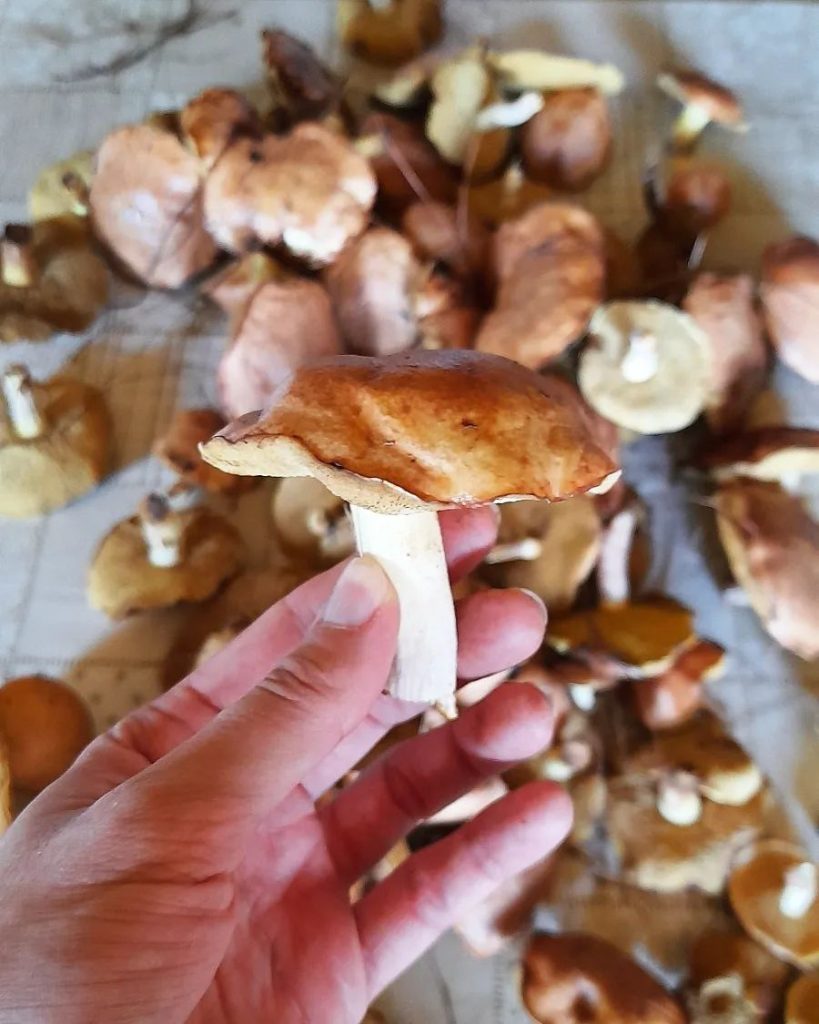
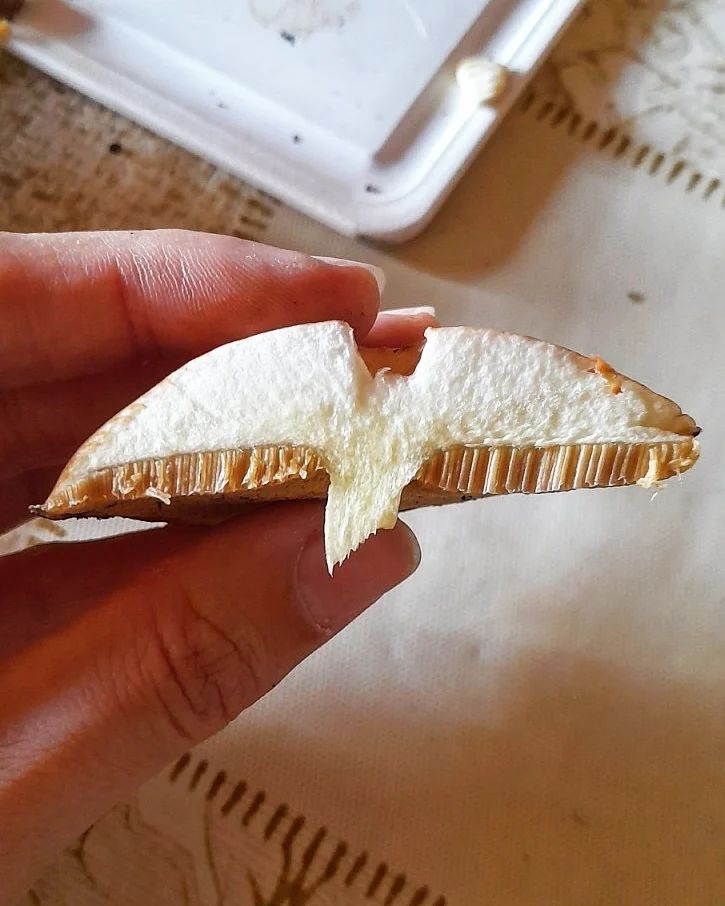
The first step is to always clean the mushroom, that is, just removing the dirt with the help of a small brush or scraping it with a knife, and cutting off the damaged parts.
Then it is recommended to remove the film on top of the cap before eating, as it can cause mild poisoning in some people. We also remove the hymenium (the spongy part underneath the cap) because we don’t like the texture – and there are some reports that this part of the mushroom can also cause adverse reactions in sensitive people.
One characteristic of this process is that when removing the sticky film from the cap, the yellowish color stains your hands and leaves them a little sticky. Nothing that can’t be removed later by washing well with soap, but if you want to avoid this, just wear gloves.
Then, just cut it into strips or however you prefer, and sauté with a little oil, olive oil or butter and your seasonings of choice, over low heat. We usually only use a little salt, black pepper and nutmeg. It’s ready in about 5 minutes.
This mushroom doesn’t have a very strong flavor, and we prefer to sauté it quickly because the longer it’s on the stove, the more it loses its consistency and becomes “slimier”. I also started dehydrating them, so they have a more concentrated flavor and are great for adding to soups, sauces, and risottos. Anyway, this is a basic method of preparation and you can adapt it and create several recipes from it!
📸 Pictures made in São Francisco de Paula, Rio Grande do Sul (Serra Gaúcha, South of Brazil).
⚠ Remember to never eat wild mushrooms without proper identification.
